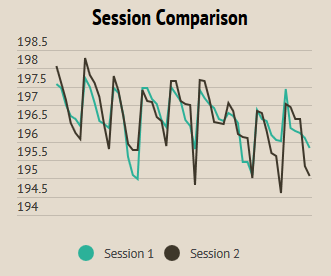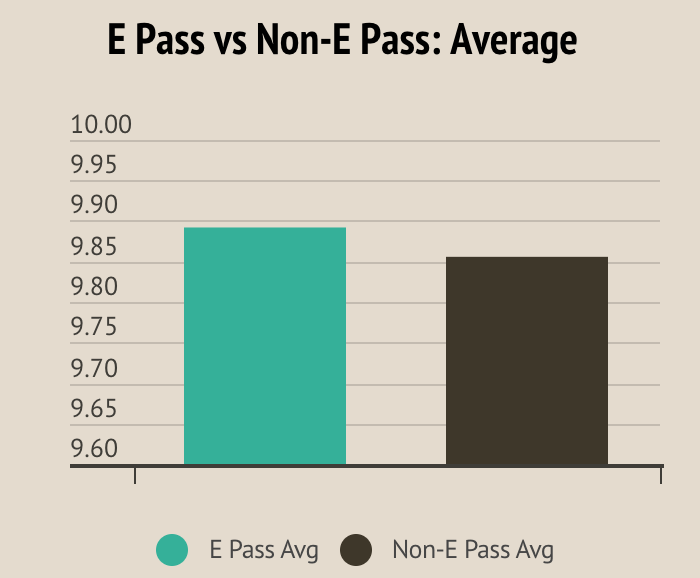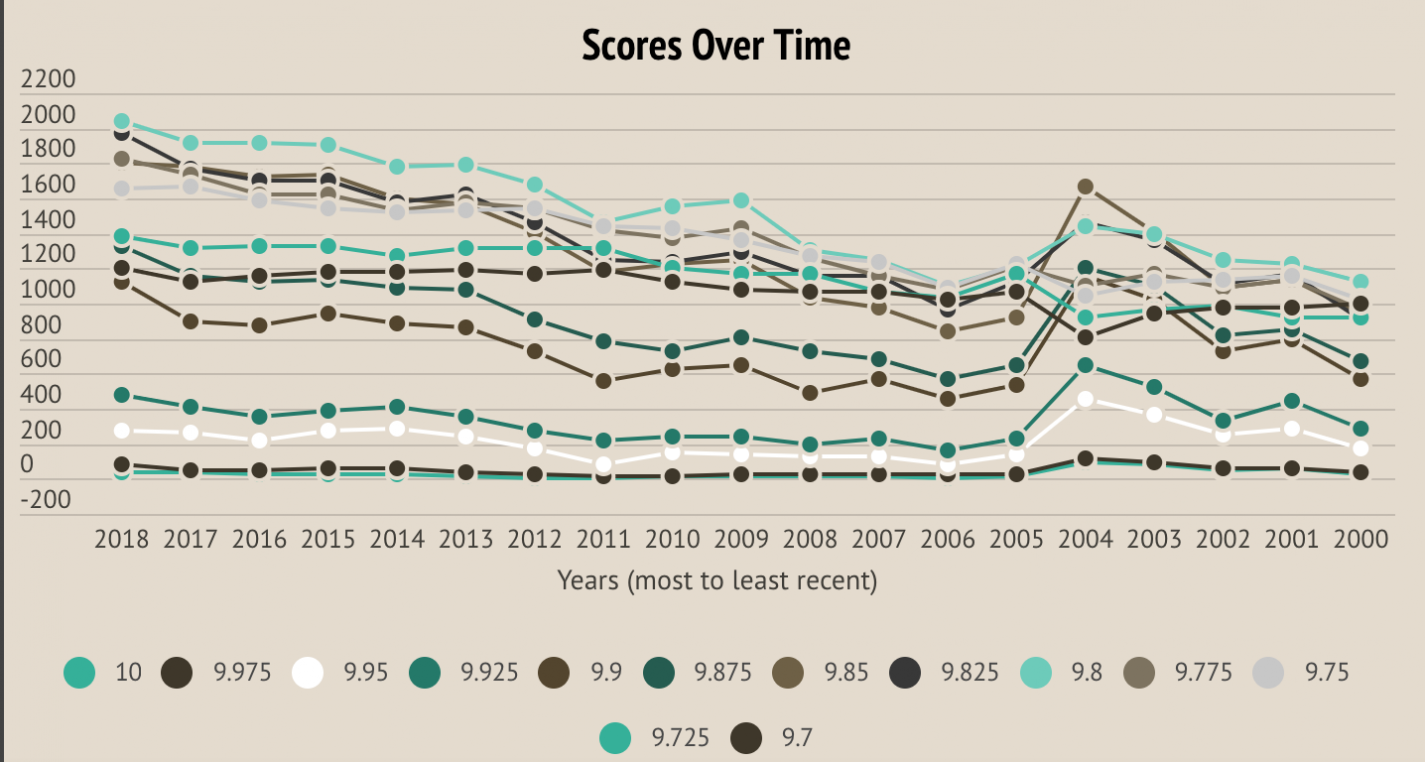Gymnastics fans, like many sports fans, love to analyze and generalize trends in their sport. Whether it’s about scoring, difficulty or the highest level a gymnast has competed, we’ve just about heard them all. But how accurate are these observations in reality? We dug into the data using statistical methods to determine if these perceptions are more than a myth.
Do Scores Actually Inflate Over Sessions?
It’s no secret this is one of the most common remarks on the gymternet. It’s why we put so much value into what session a team is in. Taking data from NCAA Semifinals over the years, we plotted session one scores against session two scores with the assumption that the latter would be higher. What we found showed that there wasn’t enough evidence to prove otherwise. Further testing solidified that the average score between the two was in fact unequal—196.626 for session one and 196.644 for session two. However, with the difference so close, we’re calling this myth fiction.

Do More Difficult Routines Score Higher?
We always wonder if difficulty affects scores. For this one, we took floor scores and looked at how they fared between gymnasts with E passes and those without. The results showed that the averages were, in fact, unequal. We can for sure say that the average score for each is different, and it’s likely the more difficult routines are scoring higher. Of course, difficulty isn’t the only factor affecting a score, but it’s certainly a factor.

Is it Easier to Score a 10 on Different Events?
The 10 is one of the most loved yet controversial aspects of collegiate gymnastics. So naturally we had to investigate it too. In regards to events, our analysis revealed that the number of 10s scored on each event had an effect on the total. Vault and floor tended to have more per season on average while bars and beam had about half the number of 10s as their vault and floor counterparts. The myth? Confirmed.
Do Yurchenkos Score Better?
With the amount of Yurchenkos we see in the NCAA each season, we can’t help but wonder if there’s favoritism towards the vault family. We compared the average scores of those who competed Yurchenkos to those who competed a non-Yurchenko style vault to see if this really is true. To limit the effect of start values on scores, we only considered gymnasts who vaulted a 10.0 start value vault. By a slim margin, we were able to conclude that Yurchenkos do tend to score higher. It’s important to note that due to the popularity of Yurchenko vaults, there was a much smaller sample size for non-Yurchenko vaulters, limiting what gymnasts we could use in the analysis. Whether it’s the nature of the gymnasts who performed the vaults or more the judges’ perception, is uncertain. But we’re still calling this myth a fact.


Score Inflation Over Time
We’d be lying if we said we’d never heard the concept of score inflation in college gymnastics. It’s one of the most common things we hear about the sport. To begin the analysis, we started with an overall score frequency chart. Off of this, we determined that 9.800 was the most common score in most years. Additionally, we saw that the majority of scores in most years were concentrated in the 9.775 to 9.850 range. Statistical testing indicated that we didn’t have enough evidence to prove that scores haven’t increased over time. With the data we have, we can conclude that scores have generally increased over time, confirming this myth. Though, when graphed, it’s clear that it’s gradual—outside of the crazy scoring of the 2004 era.

With the notion of scores increasing over time, we wanted to look at it in respect to the amount of 10s scored as well. At first glance, we determined that the amount of 10s did not depend on the year. Further investigation showed that for bars, beam and floor, it was a cyclical trend in the essence that scores increased, peaked, decreased and then repeated. Vault was the most consistent across the years, showing a slight increase if any. It was the only event that showed a straight line trend.

Do Elite Athletes Actually Score Better in College?
Elite gymnasts are some of the most hyped college recruits. But are they really any better than their J.O. counterparts? We took data from both former elites and those who only competed in the J.O. system and compared their college scores. Across events, we determined that elite gymnasts don’t necessarily score better than “mere” former-level 10s. The myth? Busted.

Teams Score Better at Home
The perception of home scoring, especially at big-name schools, can’t be missed. With its popularity, we just had to tackle this one straight on. We started by taking average scores from a variety of teams across multiple years. Then, we compared the two with the assumption that the home score would be higher. The results show while home scores do tend to be higher, it’s not the large gap most fans assume.

Article by Tara Graeve





This is so interesting to see! Thanks for all the work you put into this.
I would love to see if teams are scored differently. For example: take a gymnast and put her in a top 3 leo and then a # 30-36 leo and have judges score. Would the same routine be scored higher because of the team????
Excellent work! Very insightful.
I wonder if you analysis of Elite vs. L-10 is missing something… Maybe you could explain how you sifted the two groups since a lot of Elites “drop-back” for a year and a lot of Jr Elites decide to go L-10 as Srs…
My gut tells me that while there have been great NCAA Gymnasts that never competed as Sr-Elites it sure seems like that last teams that have won titles (UCLA, OU, and Florida) have been lead by a healthy dose of Elite vets…
Hi,
When choosing athletes we took into consideration those who drop back down. Those were not included in our analysis — just those who purely went one way or another without crossover. From there we performed statistical hypothesis tests in which we were able to compare based on averages on each event. This revealed that there wasn’t evidence to say that elite gymnasts always do better in college.